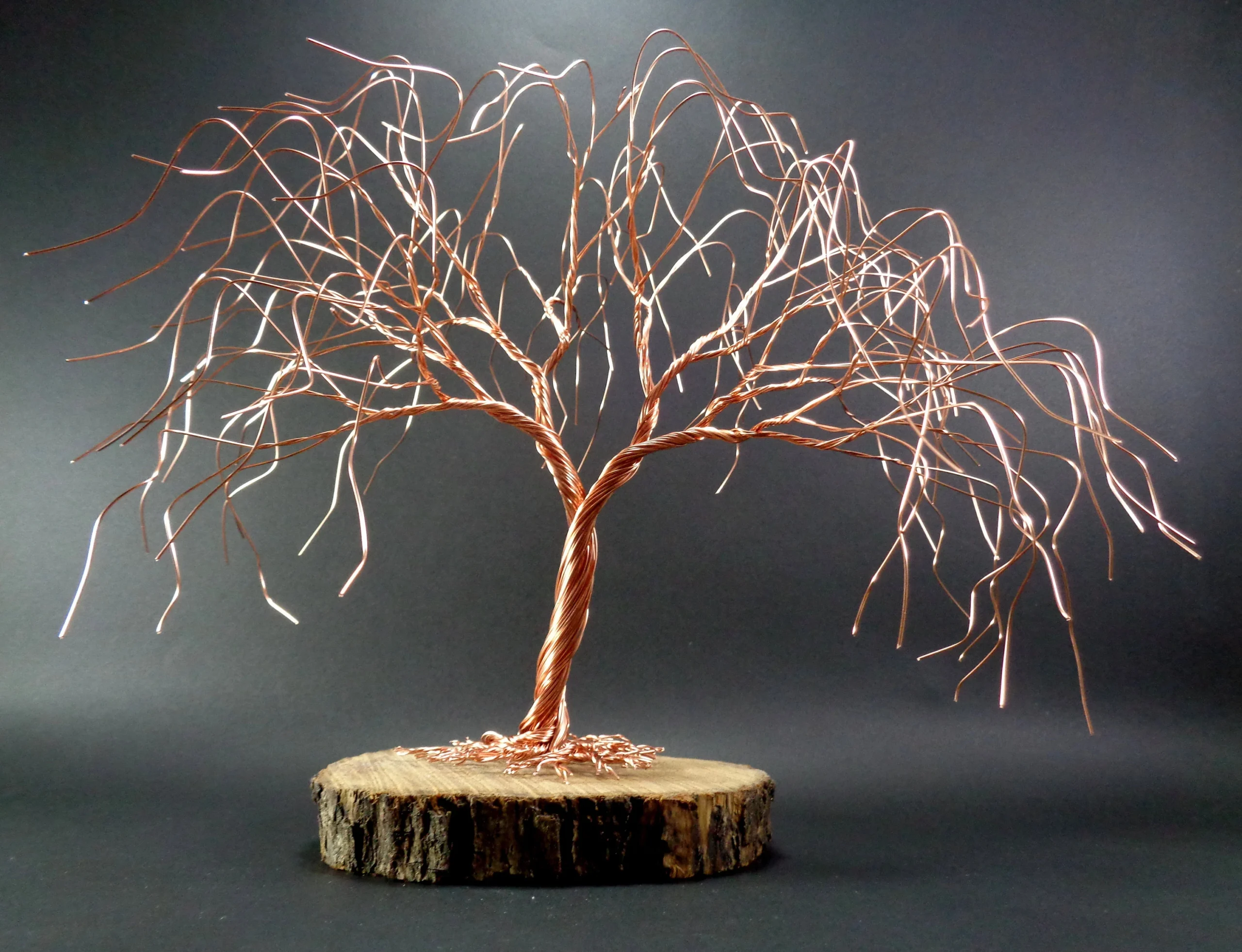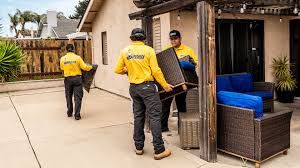Blog
Wire Art – Types, Benefits, And Creative Inspirations!

Wire art is a fascinating and versatile form of artistic expression that has been gaining popularity worldwide. Whether you are a beginner looking to experiment with simple wire sculptures or an experienced artist exploring intricate designs, wire art offers endless creative possibilities. From delicate jewelry to large-scale sculptures, wire art spans multiple disciplines and provides a unique way to transform a simple material into stunning masterpieces.
In this comprehensive guide, we will delve into everything you need to know about wire art, including its history, types, benefits, techniques, and tools. We will also explore expert tips, inspirations, and frequently asked questions to help you get started with your wire art journey.
What Is Wire Art?

Wire art is the practice of shaping and manipulating wire to create artistic designs, sculptures, jewelry, and decorative pieces. Artists use various types of wire—such as copper, aluminum, steel, and brass—to craft intricate patterns and unique forms.
Wire art can be as simple as a single continuous line forming a shape or as complex as multi-layered sculptures that require detailed craftsmanship. This art form is highly flexible, allowing creators to combine wire with other materials like beads, glass, or wood to enhance their designs.
The History and Evolution of Wire Art:
Wire art has evolved from a simple craft to a recognized art form. It has been used for centuries in jewelry, sculpture, and decorations. From ancient civilizations to modern innovations, wire art continues to inspire artists worldwide. Let’s explore its fascinating history and how it has changed over time.
Ancient Beginnings:
Wire art has roots in ancient Egypt and Mesopotamia, where artisans crafted jewelry and decorative objects. The Greeks and Romans refined wirework, incorporating it into metalwork and ornamental designs. These early innovations set the stage for wire to become a medium of artistic expression rather than just a functional material.
Medieval and Renaissance Era:
During the medieval period, wire techniques advanced, particularly in chainmail armor and religious artifacts. The Renaissance encouraged experimentation, leading to the creation of detailed wire sculptures and intricate jewelry. This era marked the shift from wire as a practical tool to wire as a form of artistic creativity.
Modern Wire Art Movement:
In the 20th and 21st centuries, artists like Alexander Calder revolutionized wire art, introducing it as a mainstream artistic medium. Today, wire art has expanded to include kinetic sculptures, mixed-media installations, and digital-assisted designs. Contemporary artists are constantly pushing the boundaries, integrating new materials and technology into their work.
Types of Wire Art:
Wire art offers unlimited creative possibilities. Whether you enjoy sculpting, jewelry-making, or calligraphy, wire is a flexible and exciting medium. Artists continue to discover new ways to shape, bend, and manipulate wire into unique artistic expressions. Below are some of the most popular forms of wire art today.
Wire Sculptures:
Wire sculptures are three-dimensional artworks made by bending, twisting, and shaping wire into detailed figures, animals, or abstract designs. Some artists create minimalist line sculptures, while others build intricate, lifelike structures. The flexibility of wire allows for endless possibilities, making it a favorite among contemporary sculptors.
Wire Jewelry:
Jewelry making is one of the most common forms of wire art. Artists wrap, twist, and weave wire into elegant rings, earrings, pendants, and bracelets. Adding gemstones, beads, and charms enhances these pieces, creating personalized, handmade jewelry. Wire jewelry is popular for its intricate beauty and limitless customization options.
Wire Calligraphy and Typography:
Wire calligraphy transforms words and letters into elegant sculptures. Artists bend wire into phrases, names, or entire quotes, often used for home decor, wedding decorations, or branding. This type of wire art requires precision and skill, making it both a challenging and rewarding artistic discipline.
Wire Bonsai Trees:
Wire bonsai trees mimic the delicate branches and roots of real bonsai. Each wire strand is carefully twisted to resemble the natural growth of a tree. These miniature sculptures capture the beauty of nature in a permanent form, making them popular among collectors and interior designers.
Kinetic Wire Art:
Kinetic wire art includes sculptures with moving parts that respond to wind, touch, or mechanical motion. Hanging mobiles, rotating wire pieces, and interactive installations fall under this category. These artworks bring an added dimension to wire art, making it dynamic and engaging.
Wire Mesh Art:
Wire mesh is used to create stunning, detailed portraits, abstract figures, or delicate landscapes. The fine, interwoven wires give the illusion of depth and transparency, making wire mesh art appear as if it is floating in the air. This technique is perfect for capturing subtle details in artistic creations.
Benefits of Wire Art:
Wire art is more than just a craft; it’s a rewarding artistic experience with numerous benefits. It offers accessibility, creativity, and relaxation, making it a great choice for hobbyists and professionals alike. Whether you’re looking to explore a new art form or start a small business, wire art has something to offer.
Highly Versatile:
Wire art can be applied in multiple creative fields, including sculpture, jewelry-making, and home decor. Its flexibility allows artists to experiment with different styles and techniques. Whether you want to create something minimalistic or highly detailed, wire provides endless artistic possibilities, making it one of the most adaptable art forms.
Also Read: Is Tom Brady Dating Chris From Mr Beast – The Truth Behind the Rumors!
Affordable and Accessible:
Unlike many other art forms that require costly materials, wire art is relatively inexpensive. Basic tools like pliers and cutters, along with affordable wire, are enough to start. This accessibility makes wire art a great choice for beginners, as it requires minimal investment while still offering unlimited creative potential.
Enhances Creativity:
Wire art encourages innovation and problem-solving. Shaping wire into different forms challenges the artist’s imagination and artistic skills. Whether designing sculptures, jewelry, or typography, working with wire improves spatial awareness and hand-eye coordination, making it an excellent artistic practice for creative growth.
Therapeutic and Relaxing:
The process of bending and shaping wire can be highly meditative. Many artists find working with wire to be a stress-relieving activity, similar to other forms of crafting. The repetitive motion and focus required for wire art help improve concentration, providing a calming effect that enhances overall mental well-being.
Environmentally Friendly:
Wire art is an eco-friendly craft, as many artists use recycled or repurposed materials. Upcycling old wires from electronics, jewelry, or discarded objects reduces waste while promoting sustainability. By choosing wire art, creators contribute to an environmentally conscious artistic movement, making it a responsible and creative hobby.
Wire Art Inspirations and Creative Ideas?
- Minimalist Wire Portraits: Minimalist wire portraits use a single continuous wire to create elegant outlines of faces, animals, or abstract forms. This modern and simple design is perfect for wall art or framed decor, offering a stylish way to capture expressions with clean lines and graceful curves.
- Hanging Wire Mobiles: Hanging wire mobiles combine motion and design, creating floating sculptures that move with air. These pieces often feature beads, glass, or lights, adding a dynamic effect. Used in nurseries, gardens, or modern interiors, they bring a sense of calmness, creativity, and balance to any space.
- Personalized Wire Name Signs: Wire name signs are handcrafted decor pieces featuring names, quotes, or meaningful words. These custom signs are popular for weddings, gifts, or business branding, offering unique personalization. Available in different fonts and finishes, they add a touch of creativity and elegance to any setting.
- Floral Wire Art: Wire flowers and vines create stunning, everlasting floral decorations that never wilt. Used in home decor, wedding bouquets, and artistic displays, these designs capture nature’s beauty in metal form. Artists shape petals and leaves with delicate bends and twists, making each piece unique and timeless.
- Abstract Wire Sculptures: Abstract wire sculptures explore freeform creativity, allowing artists to bend and shape wire into unpredictable, expressive designs. Often combined with glass, wood, or mixed media, these sculptures are displayed in galleries, homes, and outdoor spaces, offering a modern, artistic statement full of movement and depth.
Essential Tools, Materials, and Creative Ideas for Wire Art
Choosing the Right Wire:
Selecting the right wire is key to creating durable and beautiful art. Copper, aluminum, brass, silver, and steel are commonly used, each offering different levels of flexibility and strength. Thin wires (24-30 gauge) work best for delicate details, while thicker wires (16-20 gauge) provide structure for sculptures and larger pieces.
Essential Tools for Shaping and Cutting:
Basic tools like wire cutters, pliers (round-nose, flat-nose, and needle-nose), and mandrels help artists bend, twist, and cut wire with precision. Wire cutters ensure clean edges, while pliers allow for detailed shaping. Mandrels and forms help in creating uniform loops and curves, especially for jewelry making.
Step-by-Step Wire Art Creation Process:
Start by choosing the right wire and sketching a design to guide your shaping. Use pliers to bend and twist the wire carefully, following the sketch. Secure connections with wrapping or soldering for durability. Finally, smooth rough edges with files and polish the piece for a clean, finished look.
Creative Wire Art Ideas for Inspiration:
Artists can explore various creative projects, including minimalist line art, kinetic wire mobiles, personalized name signs, wire flowers, and abstract sculptures. Each project offers unique opportunities for artistic expression, allowing creators to blend wire with beads, glass, or mixed media for added texture and depth.
Benefits and Future of Wire Art:
Wire art is affordable, versatile, and environmentally friendly, making it a great medium for both beginners and professionals. As technology advances, artists are exploring 3D wire printing, kinetic sculptures, and sustainable wire upcycling. The future of wire art is bright, with endless creative possibilities to explore!
The Future of Wire Art: Innovations and Trends!
The future of wire art is filled with innovation, sustainability, and growing artistic interest. With advancements in 3D printing and digital modeling, artists can now design intricate wire sculptures with greater precision. Kinetic and interactive wire art is gaining popularity, incorporating movement and technology to create dynamic pieces.
Additionally, sustainability is a major focus, with artists using recycled and upcycled wires to promote eco-friendly practices. Wire art is also expanding in home décor and fashion, making its way into interior design and jewelry trends. With online learning and social media, more artists are discovering and mastering this timeless craft.
FAQS:
1. Can beginners learn wire art easily?
Yes! Wire art is beginner-friendly and requires only a few basic tools like pliers and wire cutters. Starting with simple projects like minimalist wire shapes or jewelry can help you build skills before moving on to more complex sculptures and designs.
2. What is the best wire for making detailed sculptures?
For intricate details, 24-30 gauge copper or aluminum wire works best due to its flexibility and ease of manipulation. Thicker wires like 16-20 gauge are better suited for structural support in larger sculptures. Choosing the right wire depends on your project needs.
3. How do I prevent wire art from rusting or tarnishing?
Using stainless steel, coated, or tarnish-resistant wire can help prevent oxidation. Applying a clear protective sealant or storing wire art in a dry environment also minimizes tarnishing. Regular polishing with a soft cloth can maintain the shine and longevity of metal wire artwork.
4. Can wire art be combined with other materials?
Absolutely! Many artists mix wire with beads, glass, wood, stones, or fabric to add texture and variety to their designs. Combining materials enhances the visual appeal and allows for more intricate and dynamic creations, from jewelry to decorative sculptures.
5. Where can I sell my wire art creations?
Wire art can be sold on Etsy, Amazon Handmade, local craft fairs, and social media platforms like Instagram and Facebook Marketplace. Creating a portfolio website and showcasing your work in galleries or exhibitions can also help attract buyers and art collectors.
Conclusion:
Wire art is a unique and versatile form of creative expression, allowing artists to craft everything from intricate jewelry to large-scale sculptures. With its affordability, accessibility, and endless possibilities, wire art continues to inspire artists worldwide. As technology advances and sustainability gains importance, the future of wire art looks even more promising.
Whether you are a beginner or a professional, wire art offers limitless opportunities to explore creativity, experiment with new materials, and develop a personal artistic style. Embracing this timeless craft can lead to both artistic fulfillment and professional success.
Blog
The Complete Guide to Eviction Cleanouts for Property Owners

When a tenant is evicted, property owners are often left with more than just an empty unit—they’re left with the burden of clearing out what’s left behind. From abandoned furniture and trash to potential damages, eviction cleanouts can be overwhelming without the right approach. This guide walks you through the entire eviction cleanout process, helping you protect your investment, comply with legal requirements, and prepare your property for the next tenant.
Understanding the Basics of an Eviction Cleanout
An eviction cleanout occurs after a tenant has been legally removed from the premises, and their personal belongings remain behind. While it may be tempting to immediately dispose of everything left in the unit, eviction cleanouts must be handled carefully to avoid legal repercussions.
Different states and municipalities have specific laws regarding tenant property after eviction. Some require a holding period before disposal, while others allow immediate removal. It’s critical to understand your local laws before beginning the cleanout process.
Step 1: Confirm Legal Completion of the Eviction
Before starting any cleanout, make sure the eviction is fully legal and finalized through the court system. A sheriff or authorized official should serve the eviction notice and perform the lockout. Starting the cleanout before this step is complete can lead to legal disputes.
Also, document the state of the property immediately after the eviction. Take photos or video footage for your records to avoid potential tenant claims of theft or damage.
Step 2: Inventory and Store Abandoned Belongings (If Required)
In many jurisdictions, landlords are required to hold a tenant’s property for a specified period. This is known as a “notice of abandoned property.” During this time, the former tenant has the right to claim their belongings.
If this applies to your area:
- Create an inventory list of items left behind.
- Store belongings in a secure location, either on-site or off-site.
- Notify the tenant in writing, including the deadline for retrieval and any storage fees they may owe.
If the tenant does not respond within the allowed timeframe, you can proceed with disposal or donation.
Step 3: Remove Trash and Hazardous Materials
Once you’ve addressed any legally sensitive belongings, the next phase is clearing out all remaining debris—including trash, spoiled food, and potentially hazardous materials. Items left behind can range from broken furniture to biohazards like mold or used needles.
To make the process more manageable, consider renting a roll-off dumpster in Evanston, which provides a convenient solution for disposing of large volumes of waste. If you come across hazardous or questionable items, it’s best to bring in a professional cleanout team with experience handling such materials safely and in compliance with regulations.
Step 4: Hire a Professional Eviction Cleanout Service
While some landlords choose to handle cleanouts themselves, hiring a professional cleanout company is often the fastest and most efficient option. These companies specialize in clearing out debris, hauling unwanted items, and even performing deep cleaning afterward.
Benefits of using a professional service include:
- Speedy turnaround
- Proper disposal of waste
- Reduced risk of injury or exposure to hazardous conditions
- Optional deep-cleaning and minor repair services
Choose a licensed and insured company with experience in eviction scenarios. Ask for references or check online reviews to ensure reliability.
Step 5: Deep Clean and Repair
Once everything has been removed, the property will likely need a thorough cleaning. Depending on how the tenant left the space, this could involve:
- Carpet shampooing or floor replacement
- Wall repairs and repainting
- Pest control
- Plumbing or electrical inspections
Cleaning and minor renovations not only restore the unit to livable condition but also increase the rental value and appeal to new tenants.
Step 6: Update Security Measures
After an eviction, it’s important to ensure the property is secure. Change locks, reprogram keypads, and inspect windows or other access points. This protects the property and provides peace of mind for future tenants.
Step 7: Prepare for New Tenants
With the property cleaned and restored, you’re ready to market it again. Consider using this opportunity to upgrade appliances or make energy-efficient improvements that can help justify higher rental rates and attract quality tenants.
Also, review your lease agreements and screening process to help avoid future issues. Stronger lease clauses and thorough background checks can go a long way in protecting your investment.
Final Thoughts
Eviction cleanouts may be a challenging part of property management, but with the right knowledge and support, you can handle them effectively. Always stay informed about your legal responsibilities, and don’t hesitate to call in professionals when needed. A clean, well-maintained property is not only easier to rent but also a valuable long-term asset.
Blog
Best Personal Statement Writing Service for UCAS UK

If you’re thinking of applying to a UK university through UCAS, it’s a really exciting step, but that’s not to say it won’t have its difficult points. The personal statement is one of the most important parts of your application. Your 4,000-character essay is your opportunity to show the admission tutors how you are the ideal match for their course. Facing stiff competition for admission to college and limited space in the class, the application process can be a high-stakes game for many students. While most students are typically looking to shine in a particular way for a school, rewriting an application in the image of somebody else puts the student at risk of producing a piece of work that is flawed at its core.
We’ll discuss why personal statements are important, what an online writing service can do to help, and how to find a service that’s reliable and effective, especially when it comes to UCAS UK applications.
Why Your UCAS Personal Statement Matters
Every UCAS applicant has to do this. This single essay is sent to all your chosen universities and is assessed with your academic record, references, and predicted grades.
A well-written personal statement should:
- Let your enthusiasm for the material shine through.
- Demonstrate relevant skills and experience
- Demonstrate that you are eager to tackle university-level learning.
- Original and specific to the UK universities’ court orders.
All too often, students can’t write in the proper tone, structure their essays, or even find a focus. That’s where professional help can be so valuable.
What is a Personal Statement Service Writing?
A personal statement writing service is a specialized service that will provide pre-med candidates the right kind of help in writing their statement for an application to medical schools, law schools, and for any other programs to which a candidate may apply. These services are particularly useful for students who are applying to UK institutions through UCAS because the kind of quality, difference, and clarity that we provide is due to our scrupulously methodical approach.
- Academic and admission writers, who may also be qualified.
- Review your background and achievements.
- Adapt the content to your elective courses.
- Check the tone with the UCAS style guide.
- Eliminate grammar or structural errors.
- Deliver plagiarism-free content.
Regardless of the field you are applying to, whether it is medicine, law, engineering, or art, these services can aid you in presenting your storey most professionally.
Advantages of Using Personal Statement Services for UCAS UK
Hiring specialist writers for personal statements. Another great benefit of using personal statement help writing a personal statement for UCAS is that this kind of help will enable you to complete your application 3-6 times faster than if you tried writing on your..
- Professional help: Academic authors know what UK tutors are looking for and how to get it.
- Saves Time and Stress: Rather than stress about every sentence, you fine-tune a polished draught swiftly.
- Custom-tailored: The writer we assign you will have a strong academic background in your interest area, and will be goal-oriented and ambitious.
- Perfect Grammar and Style: Never worry about typos or awkward phrasing again.
- 100% Original Work: A plagiarism report is attached to the order to ensure that all papers are free of plagiarism.
When time is of the essence and the stakes are high, getting expert help can make a big difference.
How to Select the Best Personal Statement Writing Service?
There are good services and bad services. What to look for in a personal statement writing service, particularly for UCAS UK:
- Experience with UK university applications.
- Sample work or customer reviews.
- Plagiarism-free guarantee.
- Direct communication with the writer.
- Quick turnaround with revisions included.
- Confidentiality assurance.
Verify that the service you choose offers to discuss your background, interests, and career goals. After all, a personal statement should be personal.
Conclusion
In the competitive environment of UK university applications, your statement can mean the difference between being the ideal candidate to not being looked at twice. Professional personal statement writing services that encourage you to deliver your work on time to a high standard, and UCAS standards.
With professional coaching, refined writing skills, and a comprehensive understanding of UK admission requirements, you can be sure that your UCAS application is working for you, you can trust that its voice is a true reflection of you.
FAQ’s
Q. What is a good personal statement for UCAS?
A: Your UCAS personal statement needs to show why you enjoy the subject you’re applying for, what you’ve done to explore this interest, and what you want to do in the future. Layout: The paper should be organised, succinct, and original.
Q. Can a writing service even prove that it is real with its UCAS acceptance or brochure in the scene?
A: No one can guarantee success, but a strong PS writing service can make the difference between an admission and a rejection by focusing on your most important strengths and sharing them in a professional and visually appealing document.
Q. Is paying for a personal statement writing service viewed as cheating?
A: Not if the service takes your data and pens an original statement not based on any template. It’s a type of professional editing and support, similar to tutoring.
Q. When will I get my statement?
A: Reputable services usually have turnaround times from 24 hours to 5 days, depending on urgency and complexity.
Q. Are personal statement services confidential?
A: Yes, reliable services guarantee complete confidentiality and do not ever pass your information or statement on to third parties.
Blog
Unlocking Growth with Private Funding Loans for Business & Property

In today’s competitive landscape, securing the correct type of funding can mean the difference between simply surviving and truly thriving. Whether you’re an entrepreneur looking to scale up operations or a property investor seeking your next opportunity, financial flexibility is crucial. This is where private funding loans come in offering a lifeline to those who need fast, adaptable capital solutions.
Why Traditional Loans Aren’t Always the Right Fit
Banks and traditional lenders often follow strict guidelines that don’t account for real-world business or property needs. The approval process can be lengthy, involving extensive documentation and stringent requirements regarding credit history, cash flow, and collateral. For many, especially small business owners or first-time investors, these hurdles are enough to stall progress.
Moreover, timing is critical. Property markets shift quickly, and business opportunities don’t always wait for bank approvals. If you’re trying to move on a promising investment or need a fast cash injection to seize a market opening, waiting weeks or months can mean missing out.
The Rise of Private Funding
Private funding is emerging as a practical, agile alternative to traditional financing. These loans are typically sourced from non-bank lenders who evaluate risk differently and can tailor terms to match specific goals. This flexibility is precisely what makes private funding loans for business & property so attractive.
With private funding, borrowers can often access capital more quickly and with fewer requirements. It’s not uncommon for approvals to be based more on the strength of the asset or the business plan rather than just credit scores or historical financials.
Understanding the Benefits
Speed and Simplicity
One of the most significant advantages of private loans is speed. Decisions are made quickly, and funds can be released in days, not weeks. This is crucial when dealing with time-sensitive property purchases or urgent business expenses. The streamlined application process is another perk, often requiring fewer documents and less bureaucracy.
Flexibility in Terms
Unlike banks that tend to offer one-size-fits-all products, private lenders are more open to negotiating terms. Loan durations, repayment structures, and interest rates can often be customized to suit the borrower’s unique situation. This flexibility can make all the difference when managing cash flow or aligning repayment with revenue cycles.
Asset-Based Lending
Private lenders frequently use asset-based lending models, which can be a game-changer. Instead of focusing entirely on personal or business credit, they assess the value of the property or business asset being funded. This makes private funding loans for business & property especially appealing for entrepreneurs and investors with equity-rich but cash-poor profiles.
When to Consider Private Funding Loans
Private loans are not for everyone, but in the right situations, they offer powerful advantages.
If you’re a property investor needing quick capital to secure a deal before competitors step in, private funding can give you the edge. Likewise, business owners looking to fund expansion, purchase inventory, or navigate a temporary cash crunch may find private loans to be a strategic tool.
They are also an ideal solution for those facing rejection from banks or for individuals whose needs don’t neatly fit into a traditional loan structure. Whether it’s an unconventional business model or a non-standard property investment, private lenders are often more willing to think outside the box.
Potential Risks and Considerations
While private funding offers speed and flexibility, it also comes with its own set of considerations.
Interest rates can be higher than those of traditional loans, reflecting the increased risk that private lenders assume. Borrowers should be aware of all costs and fees and ensure that they fully understand the repayment schedule. Since many of these loans are short-term, it’s essential to have a solid exit strategy or plan for refinancing.
Transparency and communication are key. Work with reputable lenders, ask the right questions and ensure that the loan terms are laid out in writing. Being well-informed helps you leverage private funding effectively without overextending your financial resources.
Unlocking Real-World Potential
Across industries, countless success stories are fueled by timely access to funding. From small businesses that expand into new markets to savvy investors who flip properties for significant returns, private funding is often the quiet engine behind these wins.
The appeal of private funding loans for business & property lies in their ability to fill financial gaps in ways traditional institutions can’t. They offer opportunity, empowerment, and when used wisely the chance to grow faster and stronger.
Final Thoughts
Growth doesn’t always wait for perfect timing, and neither should you. Private funding provides a dynamic and accessible option for those ready to take the next step in their business or property journey. Whether you’re launching a new venture, expanding operations, or jumping on a real estate opportunity, private loans can offer the speed and flexibility you need to move forward with confidence.
Explore your options carefully, plan wisely, and consider how private funding could unlock your next big move.
-

 Tech2 months ago
Tech2 months agoSotwe STW Explained How a Radical Platform is Redefining Online Expression
-

 Entertainment3 months ago
Entertainment3 months agoHow Do I Turn On the Beatbot?
-

 Motherboard Guide11 months ago
Motherboard Guide11 months agoAre B750 Motherboard A Good Choice – A Complete Overview!
-

 Motherboard Guide11 months ago
Motherboard Guide11 months agoAre Gigabyte Motherboards Good – A Comprehensive Review!
-

 Blog4 months ago
Blog4 months agoHer Love Is A Kind Of Charity Password – The Hidden Meaning Behind the Phrase!
-

 Motherboard Guide8 months ago
Motherboard Guide8 months agoB75 Motherboard What Generation Cpu Is Supported – B75 Motherboard Cpu Support!
-

 Blog10 months ago
Blog10 months agoHow To Find My Motherboard Model And Bios Version – A Detailed Overview!
-

 Entertainment4 months ago
Entertainment4 months agoFire Kirin Xyz Login – A Complete Guide to Accessing and Playing Online!

